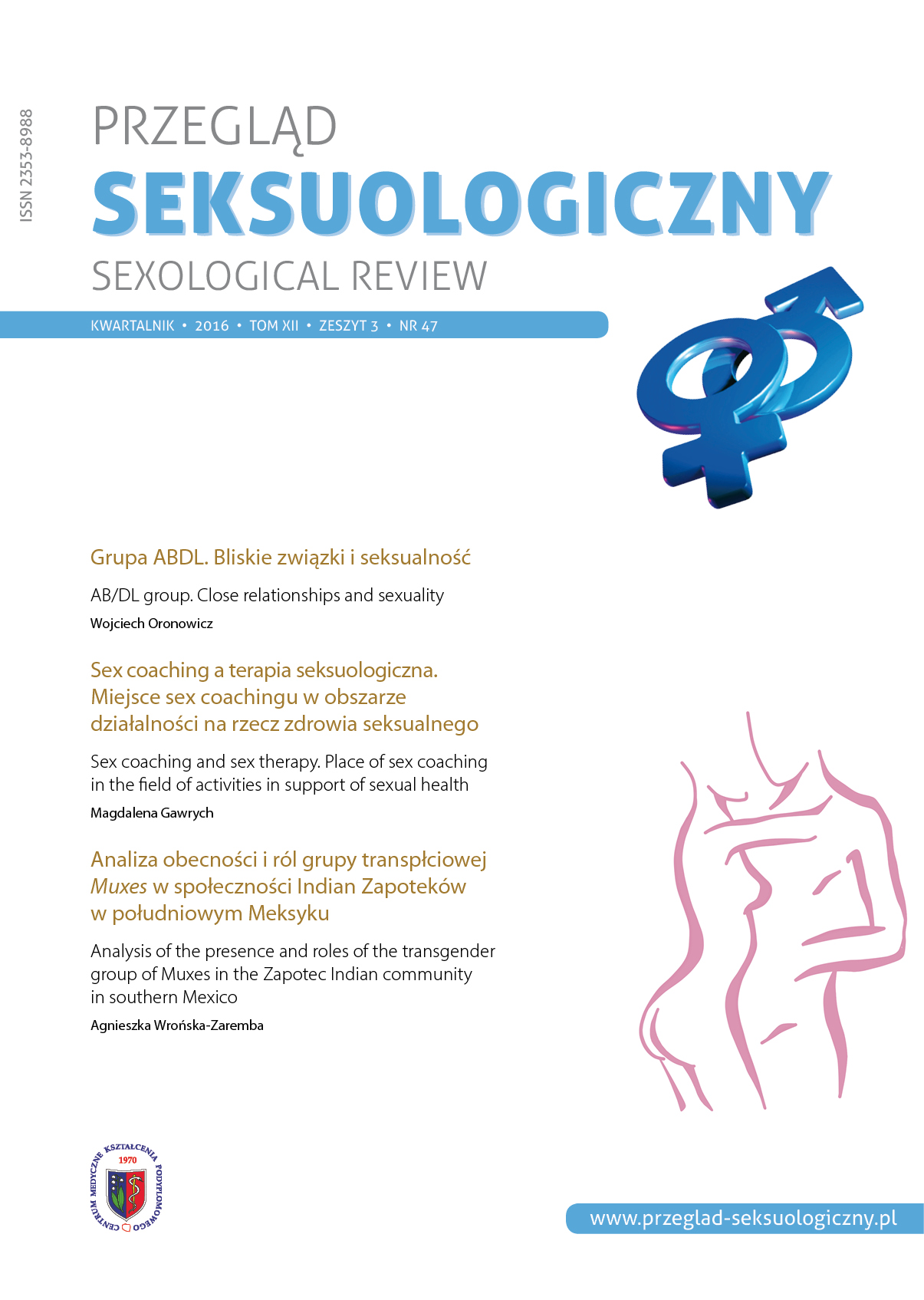Analysis of the presence and roles of the transgender group of Muxes in the Zapotec Indian community in southern Mexico
Analysis of the presence and roles of the transgender group of Muxes in the Zapotec Indian community in southern Mexico
Author(s): Agnieszka Wrońska-ZarembaSubject(s): Psychology
Published by: Centrum Terapii Michał Lew-Starowicz
Keywords: muxes; transgender; gay; third sex; transsexualism; cross-dressing
Summary/Abstract: The term muxe (also spelled with “mushe” and “muxhe”; [muʃeʔ]) is derived from the 16th-century Spanish word denoting a „woman” (today’s „mujer”) in Zapotec cultures of Oaxaca in southern Mexico; it describes a male at birth who dresses and behaves in ways otherwise associated with the female gender; muxes are often seen as a third gender. Some of them marry women and have children while others choose men as their sexual or romantic partners; yet very few of them remain in permanent or steady relationships. It is widely reported that there is less hostility towards muxe in comparison with the attitudes towards homosexual males, lesbians, or transsexual women face in other regions of the country. Other Indian communities have similar „third gender” roles such as the biza’ah in Teohtitlán del Valle or berdache in Northern America. There is no doubt that in the indigenous Zapotec community the cross-dressing muxes are widely accepted as an integral part of the tradition and the society; however, total tolerance for the trans-gender people in a country where machismo dominates seems to be more apparent than real and the Juchitan reputation for being “idyllically tolerant” seems to be exaggerated. Reports on the status and acceptance of muxes in contemporary Zapotec culture vary. Muxes living in small, traditional village communities may enjoy a high social status and general respect while in larger, more westernised towns they may face discrimination, especially from homosexual men. Despite this, Muxe have traditionally been considered as bringing good luck and worth more than women; today, many of them have white-collar jobs or are involved in politics (the most famous muxe in politics is Amaranta Gómez Regalado from Juchitán de Zaragoza, who, at the age of 25, gained international prominence as a congressional candidate for the México Posible party in the Oaxaca state elections). Muxes may be classified into vestidas (literally “dressed” which means wearing female clothes) or pintadas (literally: “wearing make-up” which means wearing male clothes and make-up). The three-gender system in the Zapotec culture predates Spanish colonization, but the phenomenon of the muxe dressing as women is rather recent and dates back to the beginning of the 1950s; it has been constantly gaining popularity since the 1980s; today nearly all of the younger generation of muxes are vestidas; it has also been reported that more and more muxes desire genital and breast surgery and are obsessed with the western standards of feminine beauty that spread to the rest of the world through globalization, or are derived from pop and mass media culture.
Journal: Przegląd Seksuologiczny
- Issue Year: 12/2016
- Issue No: 3
- Page Range: 41-46
- Page Count: 6
- Language: English

